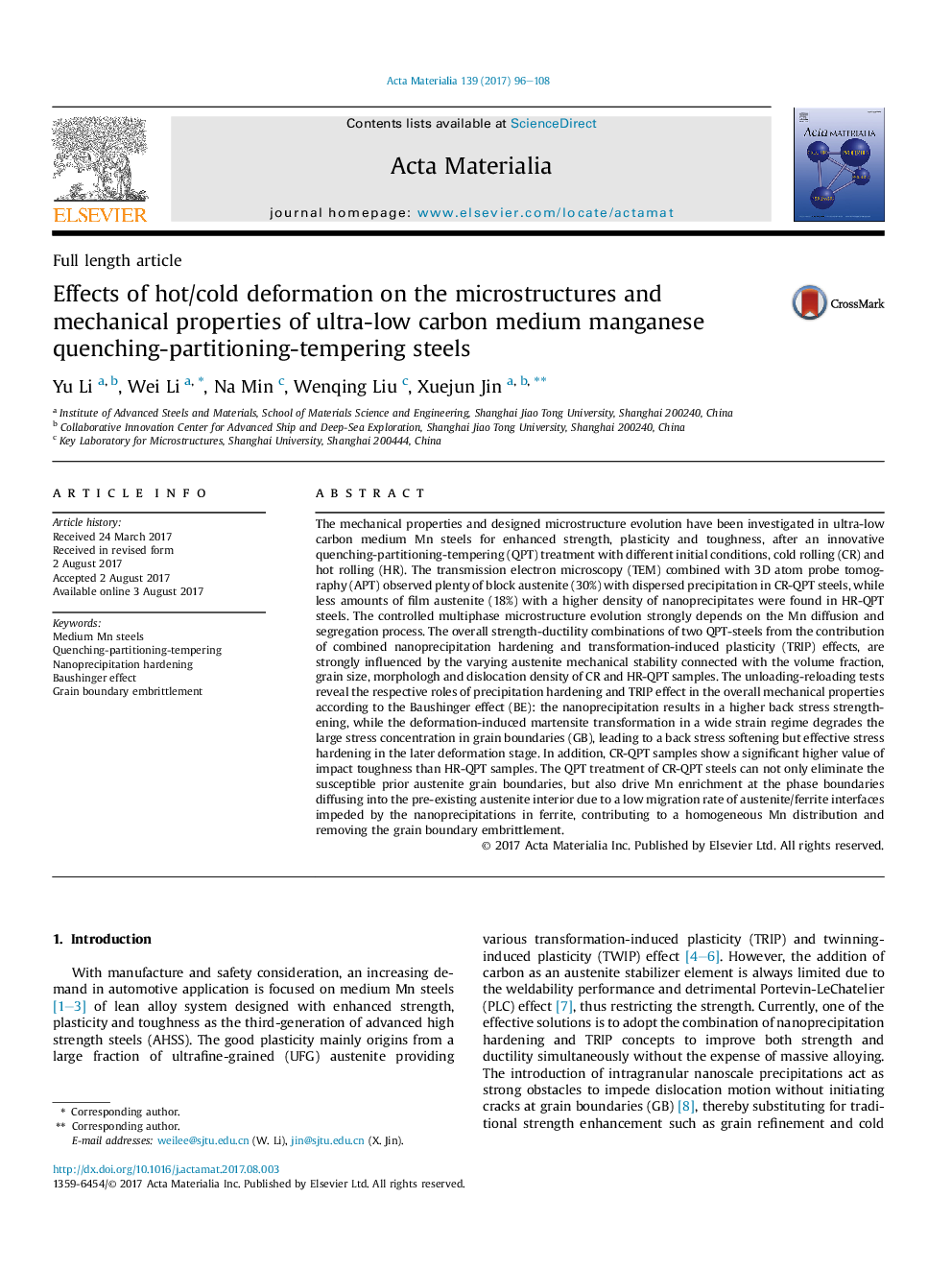| کد مقاله | کد نشریه | سال انتشار | مقاله انگلیسی | نسخه تمام متن |
|---|---|---|---|---|
| 5435809 | 1509537 | 2017 | 13 صفحه PDF | دانلود رایگان |
The mechanical properties and designed microstructure evolution have been investigated in ultra-low carbon medium Mn steels for enhanced strength, plasticity and toughness, after an innovative quenching-partitioning-tempering (QPT) treatment with different initial conditions, cold rolling (CR) and hot rolling (HR). The transmission electron microscopy (TEM) combined with 3D atom probe tomography (APT) observed plenty of block austenite (30%) with dispersed precipitation in CR-QPT steels, while less amounts of film austenite (18%) with a higher density of nanoprecipitates were found in HR-QPT steels. The controlled multiphase microstructure evolution strongly depends on the Mn diffusion and segregation process. The overall strength-ductility combinations of two QPT-steels from the contribution of combined nanoprecipitation hardening and transformation-induced plasticity (TRIP) effects, are strongly influenced by the varying austenite mechanical stability connected with the volume fraction, grain size, morphologh and dislocation density of CR and HR-QPT samples. The unloading-reloading tests reveal the respective roles of precipitation hardening and TRIP effect in the overall mechanical properties according to the Baushinger effect (BE): the nanoprecipitation results in a higher back stress strengthening, while the deformation-induced martensite transformation in a wide strain regime degrades the large stress concentration in grain boundaries (GB), leading to a back stress softening but effective stress hardening in the later deformation stage. In addition, CR-QPT samples show a significant higher value of impact toughness than HR-QPT samples. The QPT treatment of CR-QPT steels can not only eliminate the susceptible prior austenite grain boundaries, but also drive Mn enrichment at the phase boundaries diffusing into the pre-existing austenite interior due to a low migration rate of austenite/ferrite interfaces impeded by the nanoprecipitations in ferrite, contributing to a homogeneous Mn distribution and removing the grain boundary embrittlement.
Schematic sketch of the microstructure evolution process during the multistage QPT treatment. In the HR-QPT steels, the reverse austenite easily transforms to martensite again due to a low partitioning level during the high temperature aging stage. The CR-QPT steels show a higher transformation rate due to high density of dislocations as nucleation sites. In the following tempering process, the secondary austenite reversion occurs in the HR-QPT steels while the Mn enrichment in the grain boundary can diffuse into the austenite interior in the CR-QPT steels.178
Journal: Acta Materialia - Volume 139, 15 October 2017, Pages 96-108
